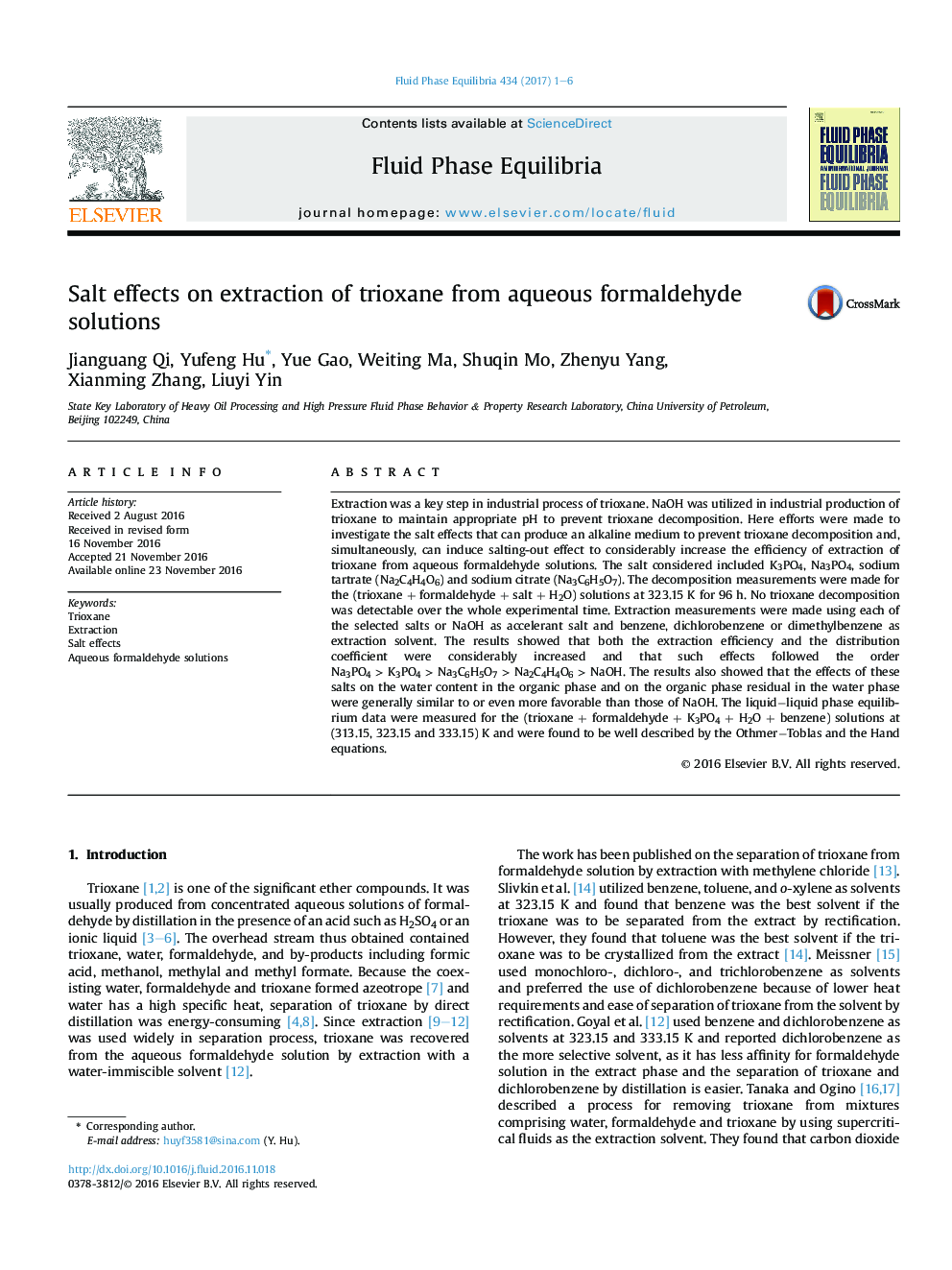| Article ID | Journal | Published Year | Pages | File Type |
|---|---|---|---|---|
| 4768052 | Fluid Phase Equilibria | 2017 | 6 Pages |
Abstract
Extraction was a key step in industrial process of trioxane. NaOH was utilized in industrial production of trioxane to maintain appropriate pH to prevent trioxane decomposition. Here efforts were made to investigate the salt effects that can produce an alkaline medium to prevent trioxane decomposition and, simultaneously, can induce salting-out effect to considerably increase the efficiency of extraction of trioxane from aqueous formaldehyde solutions. The salt considered included K3PO4, Na3PO4, sodium tartrate (Na2C4H4O6) and sodium citrate (Na3C6H5O7). The decomposition measurements were made for the (trioxane + formaldehyde + salt + H2O) solutions at 323.15 K for 96 h. No trioxane decomposition was detectable over the whole experimental time. Extraction measurements were made using each of the selected salts or NaOH as accelerant salt and benzene, dichlorobenzene or dimethylbenzene as extraction solvent. The results showed that both the extraction efficiency and the distribution coefficient were considerably increased and that such effects followed the order Na3PO4 > K3PO4 > Na3C6H5O7 > Na2C4H4O6 > NaOH. The results also showed that the effects of these salts on the water content in the organic phase and on the organic phase residual in the water phase were generally similar to or even more favorable than those of NaOH. The liquidâliquid phase equilibrium data were measured for the (trioxane + formaldehyde + K3PO4 + H2O + benzene) solutions at (313.15, 323.15 and 333.15) K and were found to be well described by the OthmerâToblas and the Hand equations.
Keywords
Related Topics
Physical Sciences and Engineering
Chemical Engineering
Chemical Engineering (General)
Authors
Jianguang Qi, Yufeng Hu, Yue Gao, Weiting Ma, Shuqin Mo, Zhenyu Yang, Xianming Zhang, Liuyi Yin,
